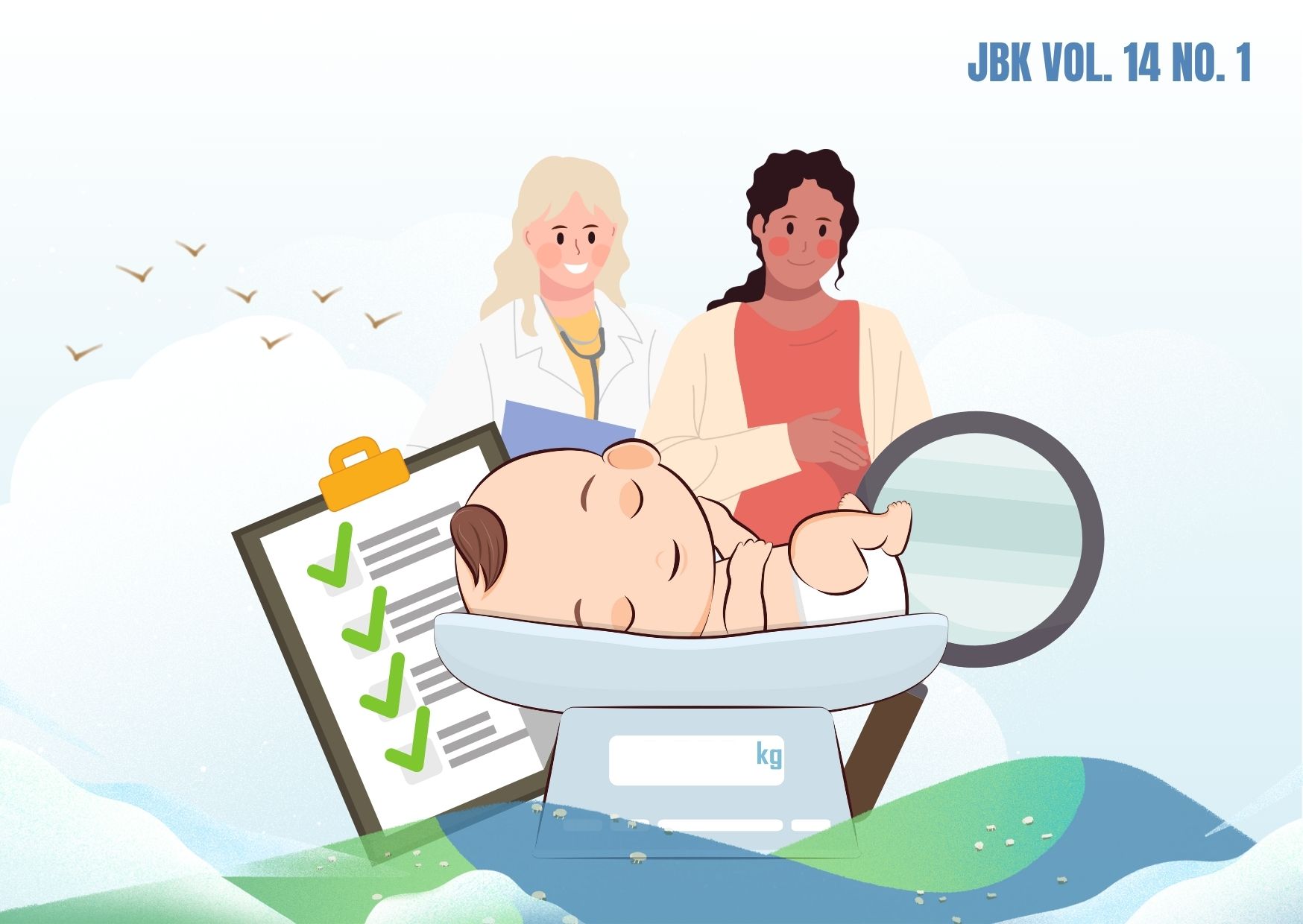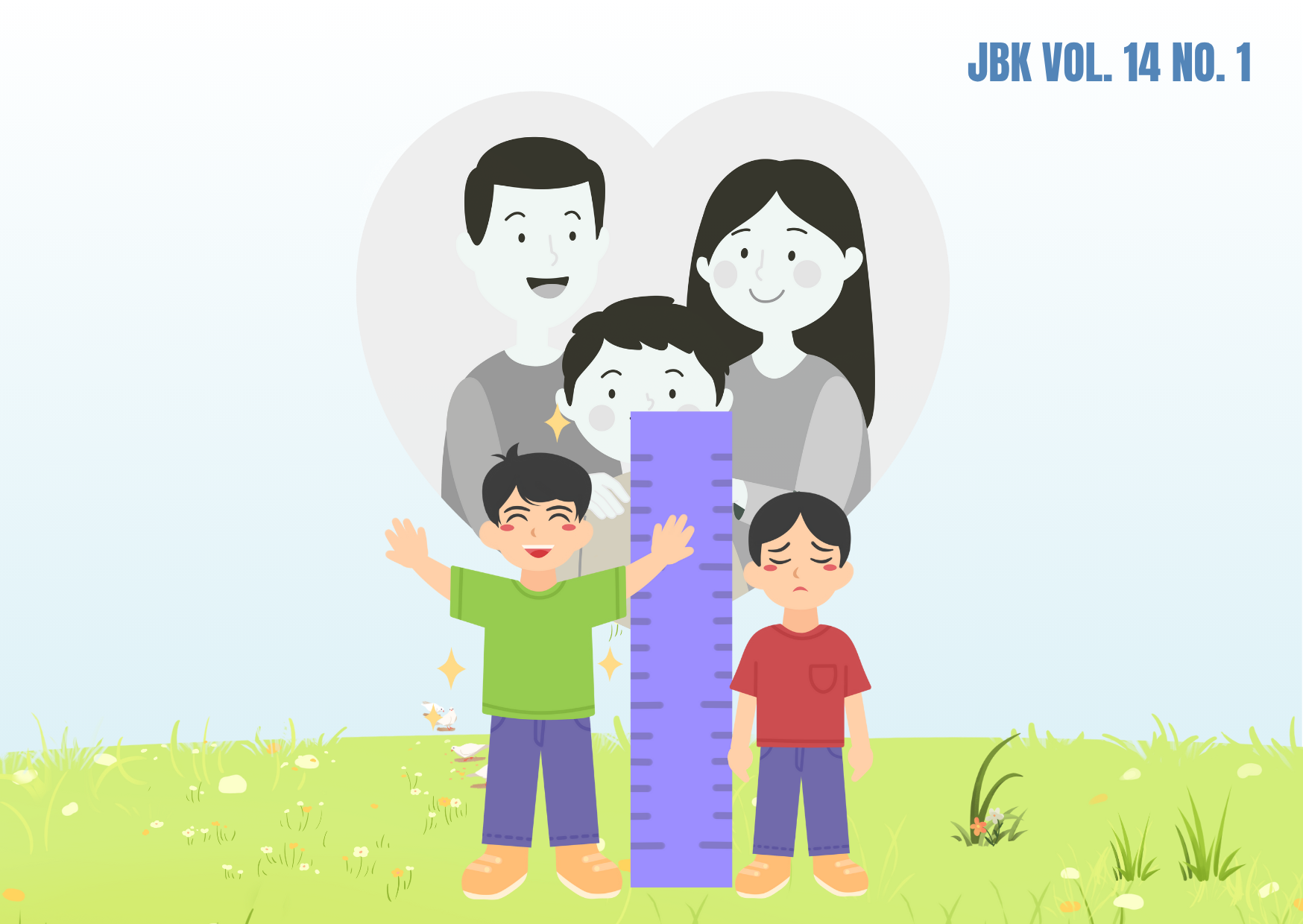DETERMINANT AGE AT FIRST MARRIAGE AMONG WOMEN IN EAST JAVA
Downloads
Indonesia is one of the countries with the highest percentage of child marriages in the world (rank 37) and the second highest in ASEAN after Cambodia. Government has issued regulations in order to reduce child marriage rates, however the results are still not significant. Economic, social, and cultural factors are significant factors in child marriage phenomenon. This study aims to analyze the relationship between spouses' age, knowledge of Adolescent Reproductive Health, age when first sexual intercourse happened, education, spouses' education, media exposure, wealth quintile index and the age of first marriage for women in East Java. This study is non-functional research using The Indonesian Demographic and Health Survey 2017 (IDHS) data with a sample size as many as 4,491 women whom got married at 15–24 years old. Data were analyzed using univariate and multivariate techniques. The results of this study prove that the spouses' age, knowledge of Adolescent Reproductive Health, age when first sexual intercourse happened, education, spouses' education, media exposure, wealth quintile index variables are significantly related to the determinants of women's first marriage age in East Java. This study provides recommendations, including revitalizing 8 family functions, strengthening creativity and innovation in the Marriage Age Maturing program, and fostering life skills through training and empowerment programs.
Abel , E . L . ” Kruger, M.. L.., 2008. Az életkori heterogámia és az élettar- tam a házasságokban : bizonyítékok a zsidó és keresztény temetí´kbí´l (Age Heterogamy and Longevity: Evidence from Jewish and Christian Cemeteries.). pp.1112–1113.
Addaney, M. and Azubike, O., 2017. Education as a Contrivance to Ending Child Marriage in Africa : Perspectives from Nigeria and Uganda. Amsterdam Law Forum, 2(9), pp.110–130.
Artaria, M.D., 2009. Perbedaan antara Laki-laki dan Perempuan : Penelitian Antropometris pada Anak-Anak Umur 6-19 Tahun. Jurnal Masyarakat Kebudayaan dan Politik, 22(4), pp.343–349.
Asmarita, 2015. Peran Unicef dalam Menangani Kasus Pernikahan Anak di Bawah Umur di India. Journal of Chemical Information and Modeling, 53(9), pp.1689–1699.
Aulia, A., Taufik, M. and Hastuti, L., 2014. Faktor-faktor yang Mempengaruhi Perkawinan Usia Muda pada Remaja Putri Usia 10–19 Tahun di Selakau Sambas. Jurnal Mahasiswa dan Peneliti Kesehatan, 2(4), pp.41–53.
Central Bureau of Statistics, National Board of Population and Family Planning, Indonesian Ministry of Health, 2017. Survei Demografi dan Kesehatan. Jakarta.
Central Bureau of Statistics and UNICEF Indonesia, 2016. Kemajuan yang Tertunda: Analisis Data Perkawinan Usia Anak di Indonesia. Jakarta.
Fajriyah, N., 2008. Keinginan Menggunakan Metode Kontrasepsi pada Remaja di Masa Mendatang di Provinsi Jawa Timur. Jurnal Biometrika dan Kependudukan, 6(2), pp.163–170.
Haroian, L., 2000. Child Sexual Development. Electronic Journal of Human Sexuallity, 3(1), pp.85–93.
Imron, A., Sjafii, A. and Mentari, D., 2018. Dampak Pernikahan Anak terhadap Kuantitas dan Kualitas Penduduk di Jawa Timur. Surabaya: Perwakilan BKKBN Provinsi Jawa Timur.
Kurniawati, L., Nurrochmah, S. and Katmawanti, S., 2017. Hubungan antara Tingkat Pendidikan, Status Pekerjaan dan Tingkat Pendapatan dengan Usia Perkawinan Pertama Wanita di Kelurahan Kota Lama, Kecamatan Kedungkandang Kota Malang. Jurnal Preventia, 2(1), pp.1–10.
Ma'arif, 2018. Hubungan antara Tingkat Pengetahuan dan Sosial Budaya dengan Sikap Remaja Terkait Pendewasaan Usia Perkawinan. Jurnal Biometrika dan Kependudukan, 7(1), pp.39–48.
Manzahri, M., 2016. Hubungan Status Sosial dengan Pernikahan Usia Dini. Jurnal Ilmiah Kesehatan, 5(10), pp.676–688.
Nalle, F.W. and Kiha, E.K., 2018. Analisis Faktor-faktor yang Mempengaruhi Tingkat Kemiskinan di Kecamatan Insana Kabupaten Timor Tengah Utara. Jurnal Dinamika Ekonomi Pembangunan, 1(2), pp.71–81.
Rahadi, D.S. and Sofwan, I., 2017. Perilaku Seks Bebas pada Anggta Club Motor X Kota Semarang Tahun 2017. Jurnal of Healt Education, 2(2), pp.115–121.
Rini, I.M. and Tjadikijanto, Y.D., 2018. Gambaran Program Generasi Berencana (GenRe) di Indonesia dan di Provinsi Jawa Timur Tahun 2017. Jurnal Biometrika dan Kependudukan, 7(2), pp.168–177.
Sarwoprasodjo, S., 2014. Pengaruh Status Ekonomi Keluarga Terhadap Motif Menikah Usia Dini. Sodality: Jurnal Sosiologi Pedesaan, 2(1), pp.53–62.
Suryoputro, A., Ford, N.J. and Shaluhiyah, Z., 2006. Faktor-Faktor yang Mempengaruhi Perilaku Seksual dan Layanan Kesehatan Seksual dan Reproduksi. Makara, Kesehatan, 10(1), pp.29–40.
Toraja, K.T., 2009. Kebiasaan Pernikahan Usia. Jurnal MKMI, 5(4), pp.89–94.
Triyono, N., 2016. Isu Perkawinan Minoritas di Thailand. De Jure: Jurnal Hukum dan Syari'ah, 8(1), pp.38–47.
Undang-Undang Republik Indonesia Nomor 20 Tahun 2003 Tentang Sistem Pendidikan Nasional. Jakarta: Presiden Republik Indonesia.
Warren, C.A.B., 1996. Older Women , Younger Men : Self and Stigma in Age-Discrepant Relationships. Clinical Sociology Review, 14(1), pp. 62–86.
Yutifa, H., Dewi, A.P. and Misrawati, 2015. Hubungan Paparan Pornografi Melalui Elektronik Terhadap Perilaku Seksual Remaja. JOM, 2(2), pp.1141–1148.
Copyright©2022 Jurnal Biometrika dan Kependudukan (Journal of Biometrics and Population)
This work is licensed under a Creative Commons Attribution-NonCommercial-ShareAlike 4.0 International License.
1. Copyright of all journal manuscripts is held by the Jurnal Biometrika dan Kependudukan.
2. Formal legal provisions to access digital articles of the electronic journals are subject to the provision of the Creative Commons Attribution-ShareAlike license (CC BY-NC-SA), which means that Jurnal Kesehatan Biometrika dan Kependudukan to keep, transfer media/format, manage in the form of databases, maintain, and publish articles.
3. Published manuscripts both printed and electronic are open access for educational, research, and library purposes. Additionally, the editorial board is not responsible for any violations of copyright law.



































